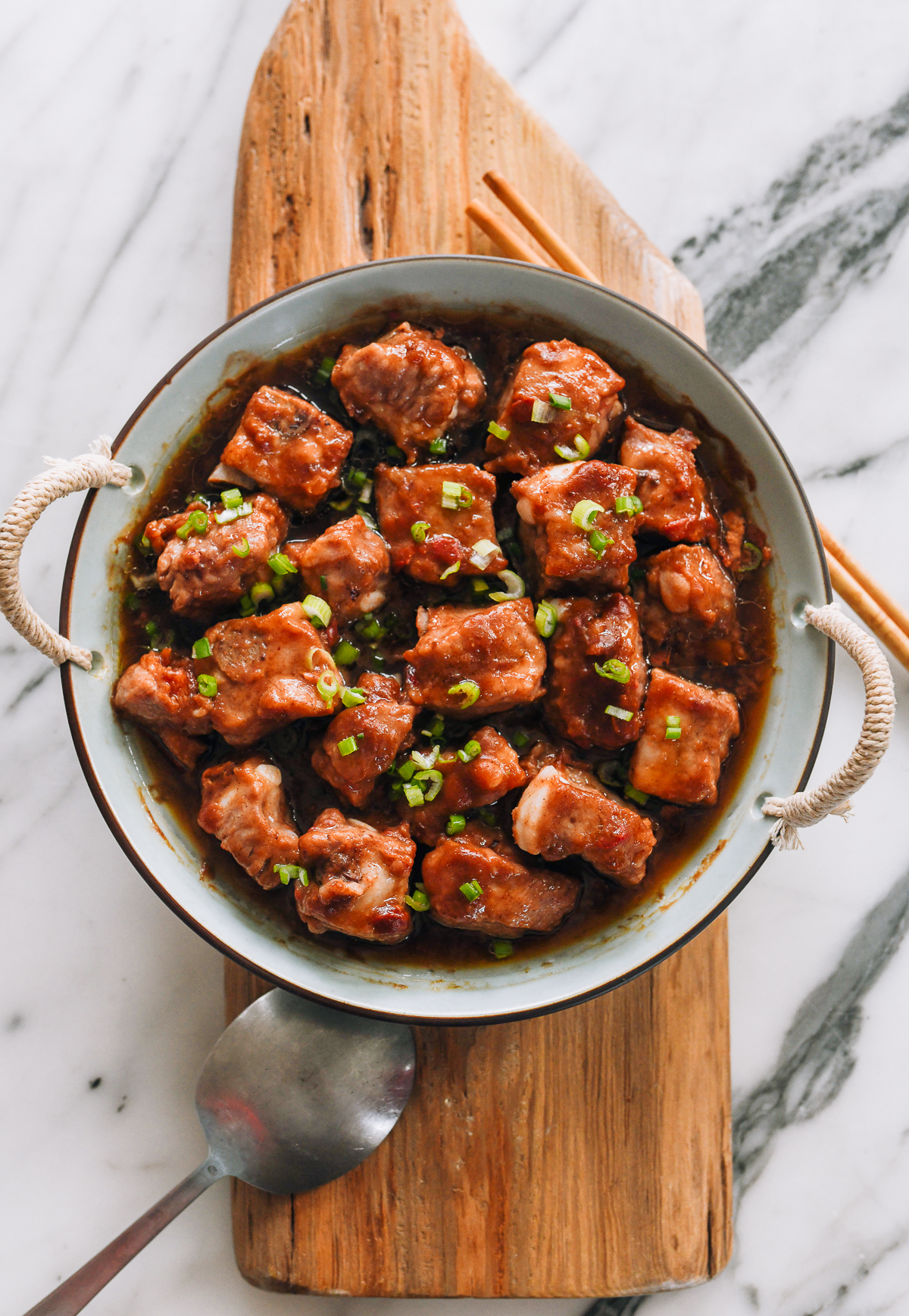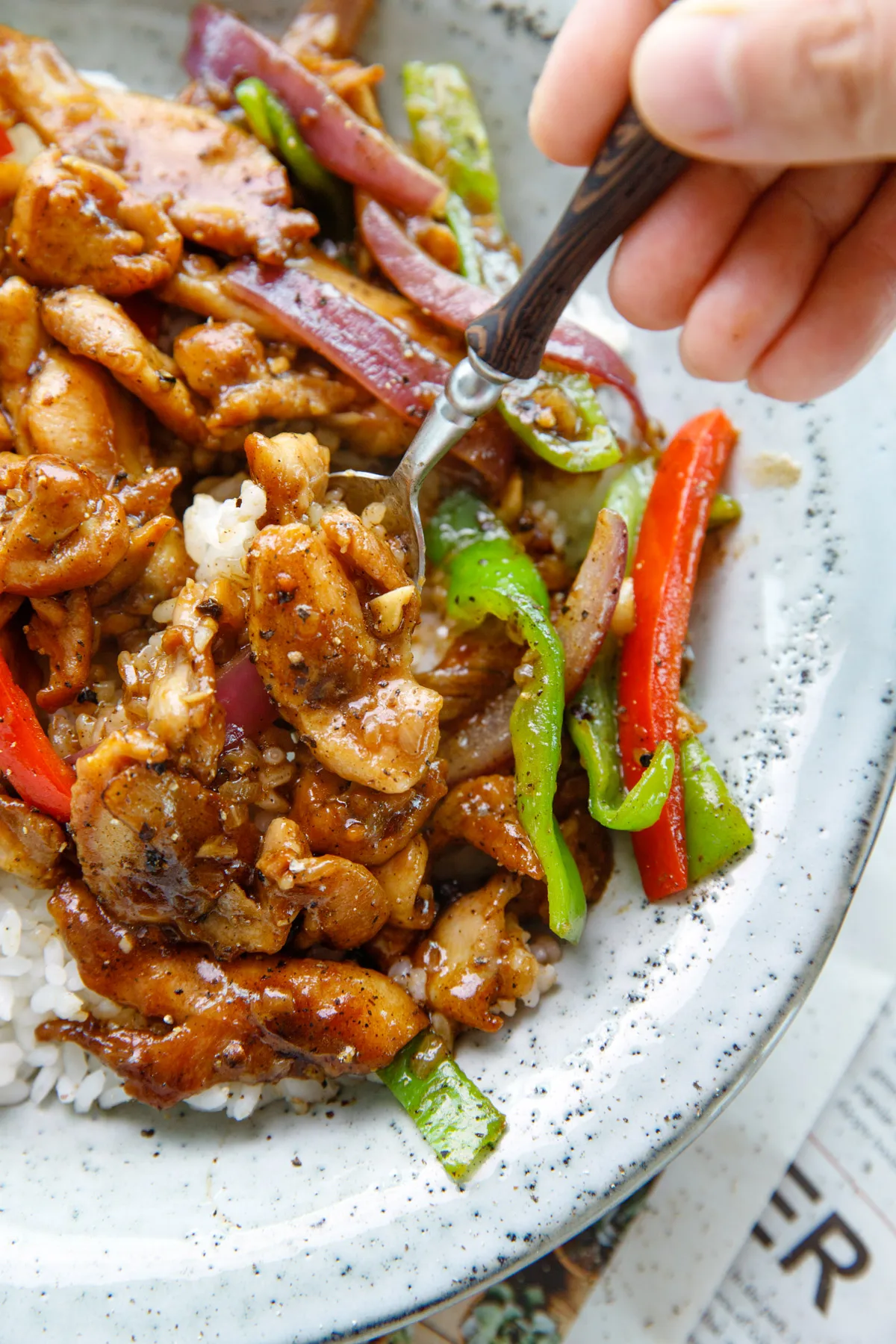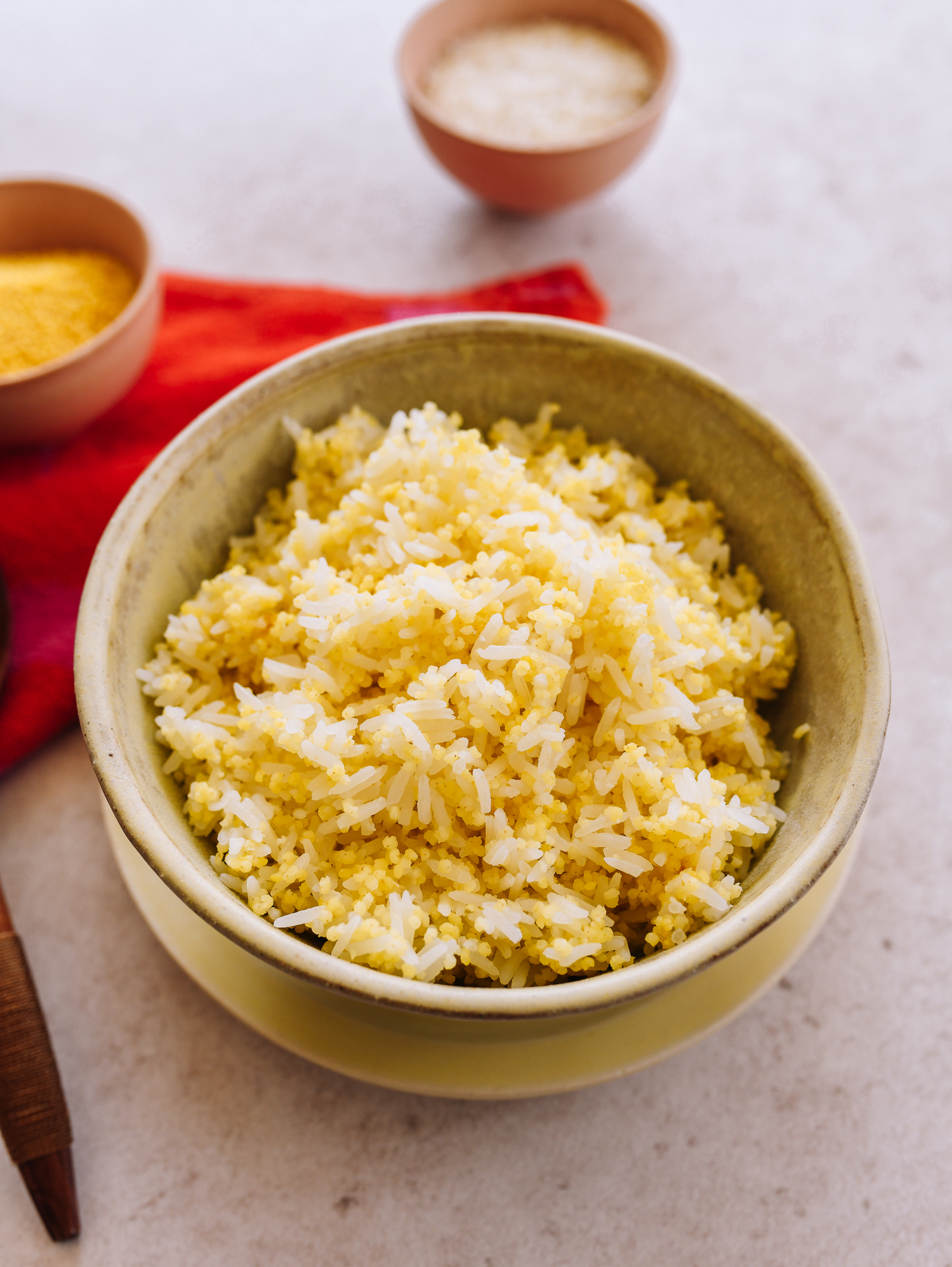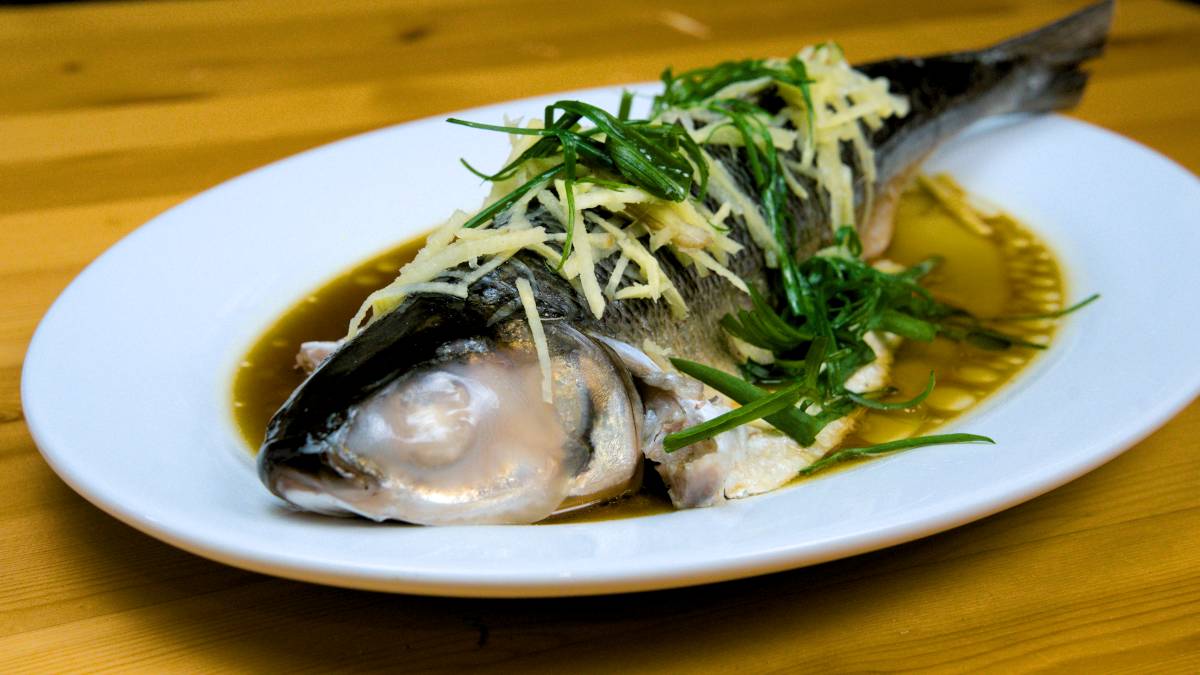Steamed Pork Ribs with Fermented Red Bean Curd is the ideal make-ahead Chinese dish for busy weeknights. Marinate the ribs the night before and store them in the refrigerator. When you return home from work, simply place them in the steamer, start the rice cooker, blanch some green vegetables, and you’ll enjoy a quick, delicious meal!
Never Steamed Ribs?
While pork ribs are typically roasted, grilled, or smoked, Cantonese cooks have a fondness for steaming them. Steamed pork ribs, known as zing paai gwat in Cantonese, offer a delightful flavor and are easy to prepare. For tips on setting up your steamer, refer to our guide on how to steam food in three different ways.
When marinated overnight, the ribs become tender and absorb rich flavors. They also cook in just 20 minutes, as they are cut into small, bite-sized pieces.
It’s important to note that steamed ribs do not have the fall-apart texture that many Americans expect from grilled, roasted, or smoked ribs. Instead, these ribs retain a bit of bite, which is our preference. They are juicy, and the cornstarch in the marinade lends the pork a silky texture after cooking.
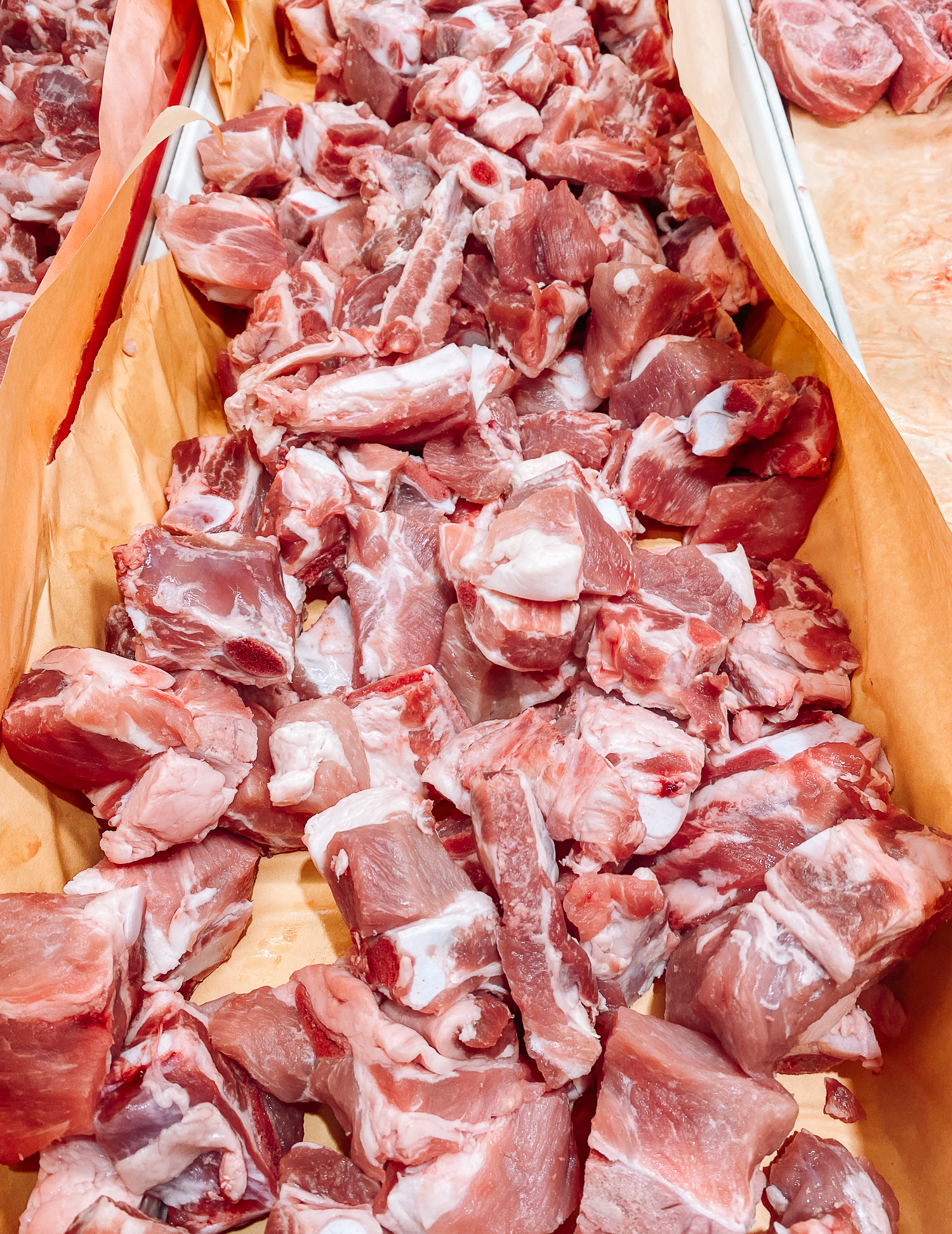

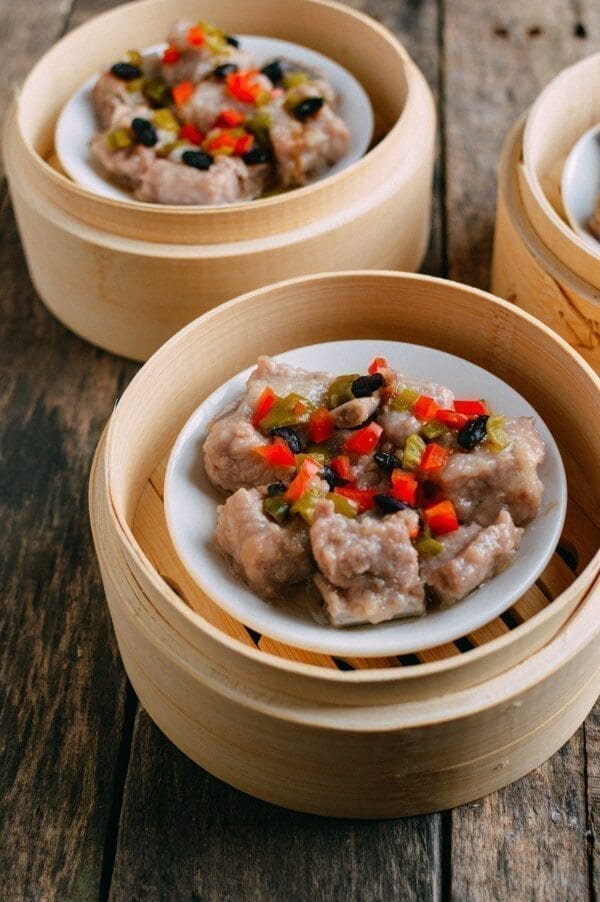
Many of you may be familiar with Dim Sum Steamed Spare Ribs with Black Beans, which is the most popular version of steamed ribs. Our recipe was one of the first to appear online back in 2014, and it tastes just like what you would find at dim sum restaurants on the weekends!
We also have a recipe for Steamed Garlic Ribs with Taro, a delicious variation. This latest recipe is flavored with fragrant red fermented bean curd.
Different Cuts of Pork Ribs Explained
You might find the various cuts of pork ribs available at the grocery store a bit confusing, so let’s clarify.
There are two main types of pork ribs: baby back ribs and spare ribs. Baby back ribs are cut from the section closer to the backbone, while spare ribs are cut from the belly area of the pig, extending from where the baby back ribs end to the tips of the ribs.
Baby back ribs are smaller, more tender, and generally more expensive than spare ribs.
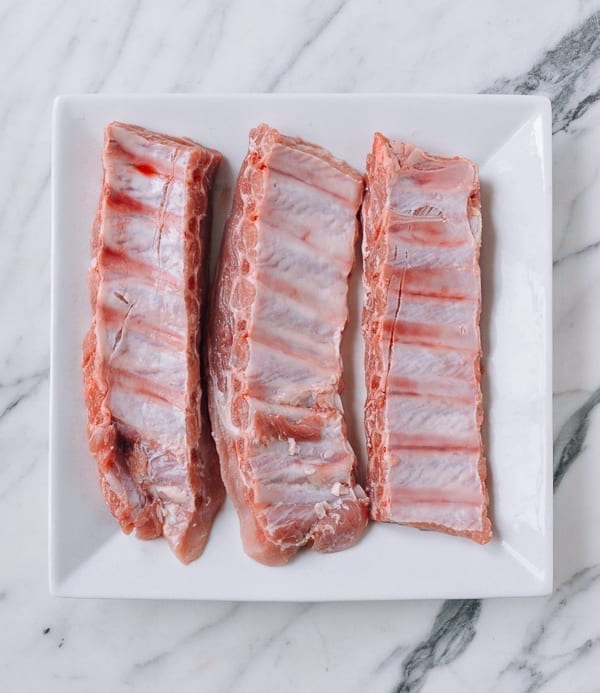

Spare ribs are larger and fattier, featuring an attached flap of meat known as the “skirt,” along with cartilaginous rib tips where the bones meet cartilage. The term “St. Louis style ribs” refers to spare ribs with these pieces trimmed away, resulting in a neat rectangular rack of ribs.


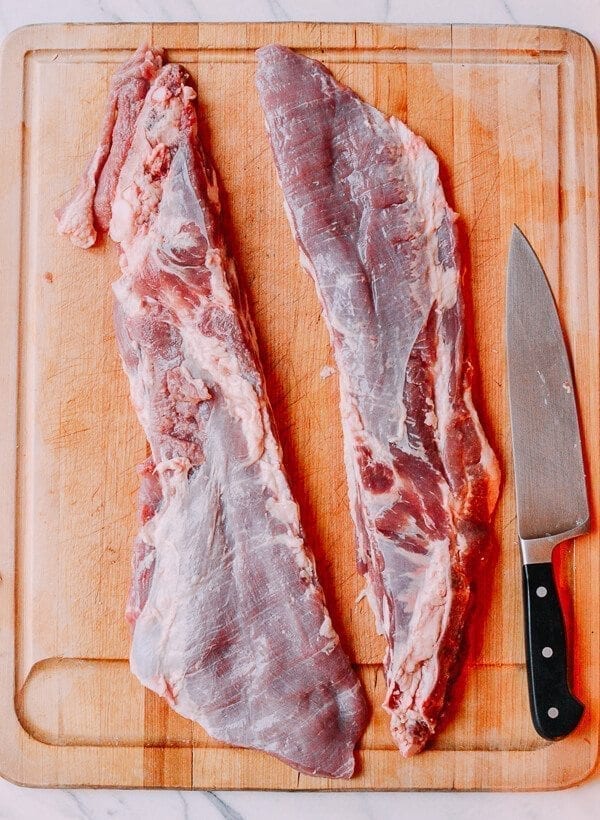
If you’ve come across “Country Style Ribs” at your grocery store, it’s worth noting that they are not actually ribs. Instead, they are a boneless cut from the shoulder of the pig, cut thickly into short lengths that resemble ribs.
What Type of Pork Ribs Do I Use?
For our steamed rib recipes, you can use St. Louis ribs or the soft cartilage rib tips cut into bite-sized pieces.

While you could also use baby back ribs cut into small pieces, they tend to be more expensive, so we usually opt for other cuts. If you prefer boneless meat, consider using small nuggets of country-style ribs or chunks of pork butt, but be sure to cut them into smaller 3/4-inch (2cm) pieces.
Some Chinese restaurants use rib tips cut into small pieces for steaming, as they are more economical and many enjoy the soft cartilage!
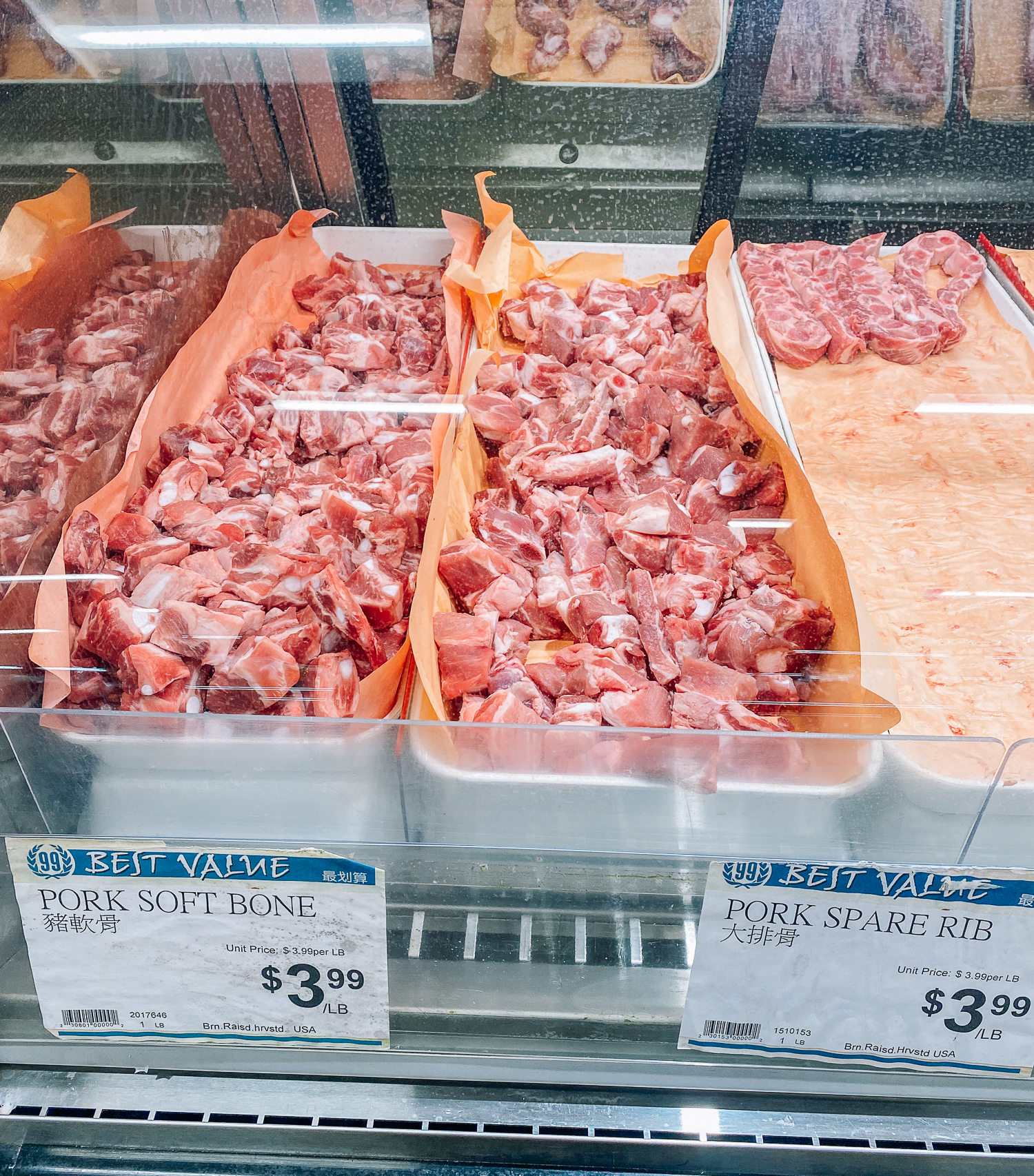
You may also encounter “cross-cut” ribs, which are cut through the bone, making it easy for home cooks to separate them into small pieces.


Steaming times will vary depending on the size of the pieces you use, so aim for uniform sizes.
Tip!
You can often find pre-cut ribs for steaming at a Chinese grocery store. Alternatively, you can ask your local butcher to prepare them. If you’re feeling adventurous and have a good bone cleaver, you can cut your own! Partially frozen ribs are easier to handle and chop. However, this is recommended only for experienced cooks; do not attempt with a regular knife as it may chip or damage it.
What is Red Fermented Bean Curd?
Fermented bean curd (腐乳 – fǔrǔ in Mandarin or foo yee in Cantonese) is a type of preserved tofu made with salt, rice wine, and other flavorings. There are both white and red varieties; the red type gets its color from a specific fermented rice.

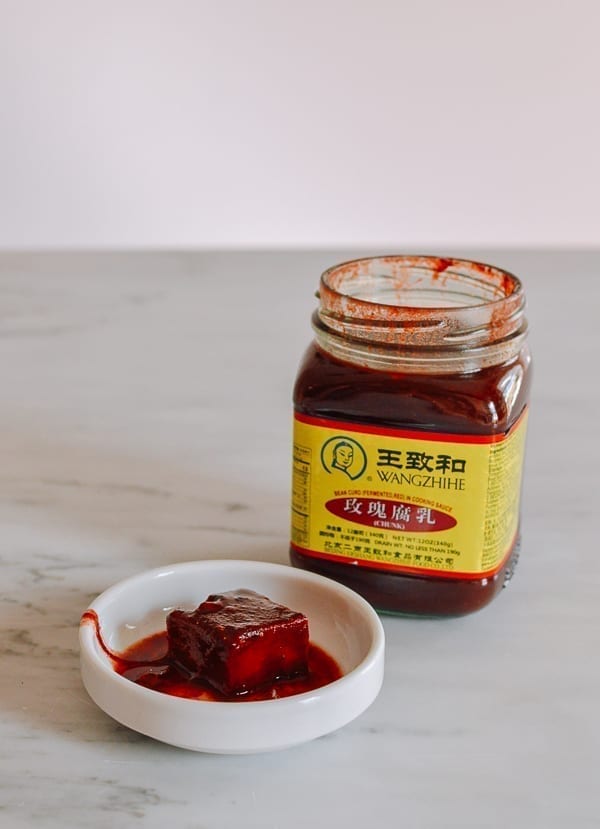
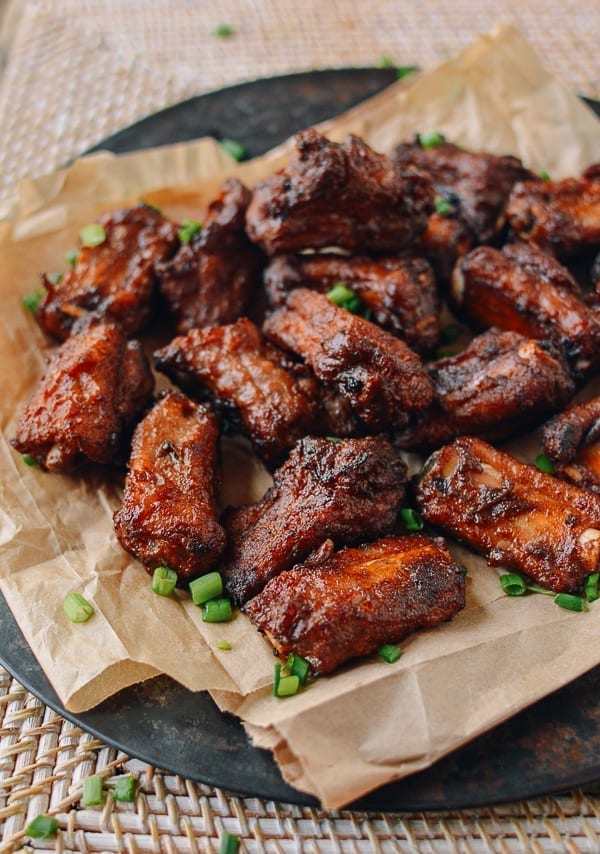
This ingredient is rich in umami. As mentioned in our article on fermented bean curd, red fermented bean curd has a stronger flavor than its white counterpart, with a more pronounced taste of rice wine, making it particularly suitable for braised meat dishes and sauces.
We incorporate this special ingredient in various dishes, especially pork recipes, as pork and red fermented bean curd complement each other beautifully. This is why I chose to use it in this new version of steamed ribs!
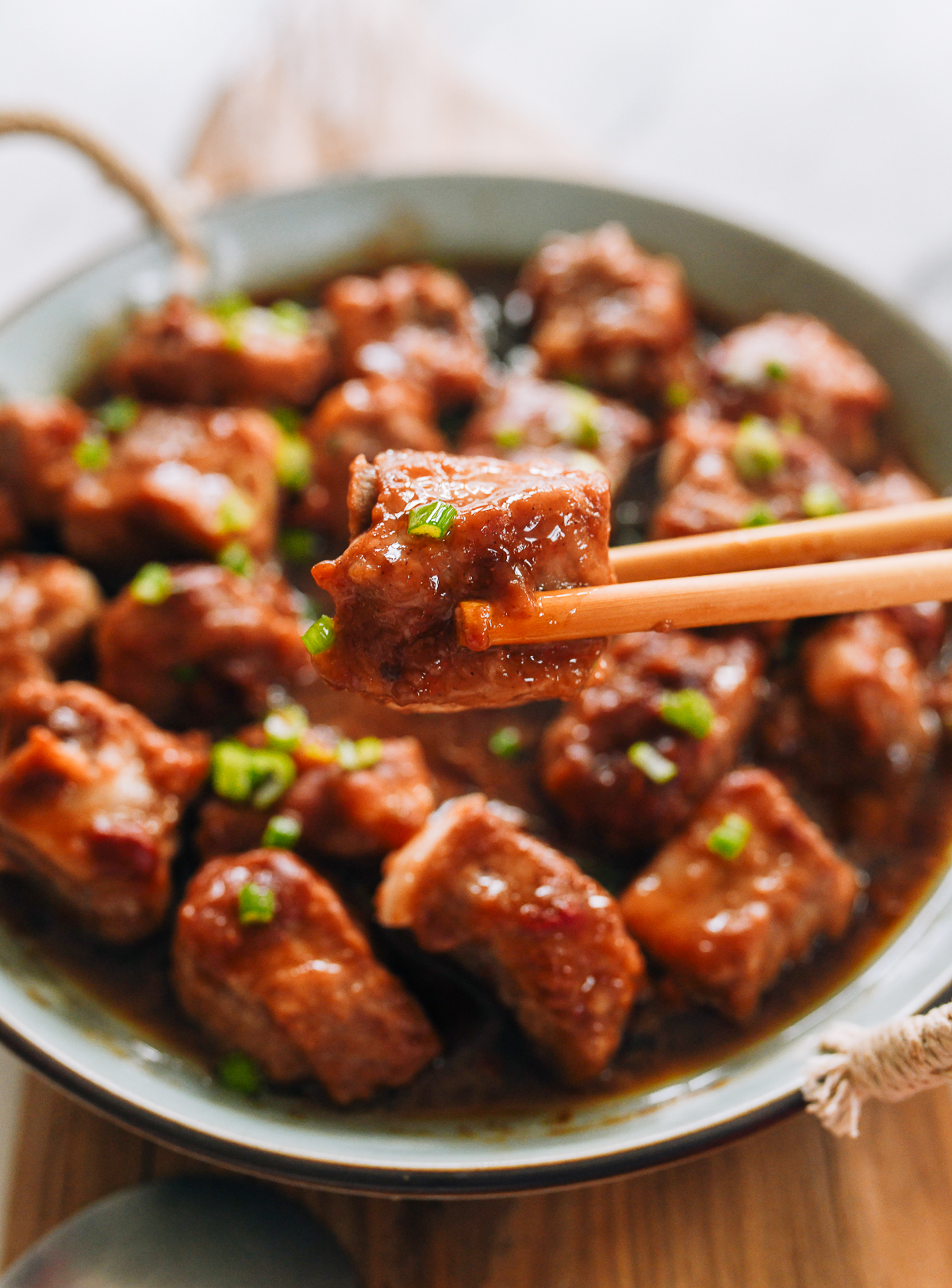
Possible Recipe Variations
Chinese restaurants are always innovating, and their steamed rib dishes have evolved. You may find that some restaurants add small chunks of taro, pumpkin, or kabocha squash beneath the ribs to soak up the juices, which makes for a delightful addition!
You can incorporate any of these ingredients, cut into small ¼- to ½-inch (1cm) pieces, placing them evenly in a single layer on the dish before adding the ribs on top.
Recipe Instructions
Begin by placing the ribs in a large bowl and covering them with cold water. Stir and agitate the ribs to rinse them thoroughly. Pour out the water and rinse the ribs again under cold running water. Once the water runs clear, leave enough water to submerge the ribs. Stir in the baking soda (this will tenderize the ribs and enhance their flavor) and soak for 30 minutes to 1 hour.
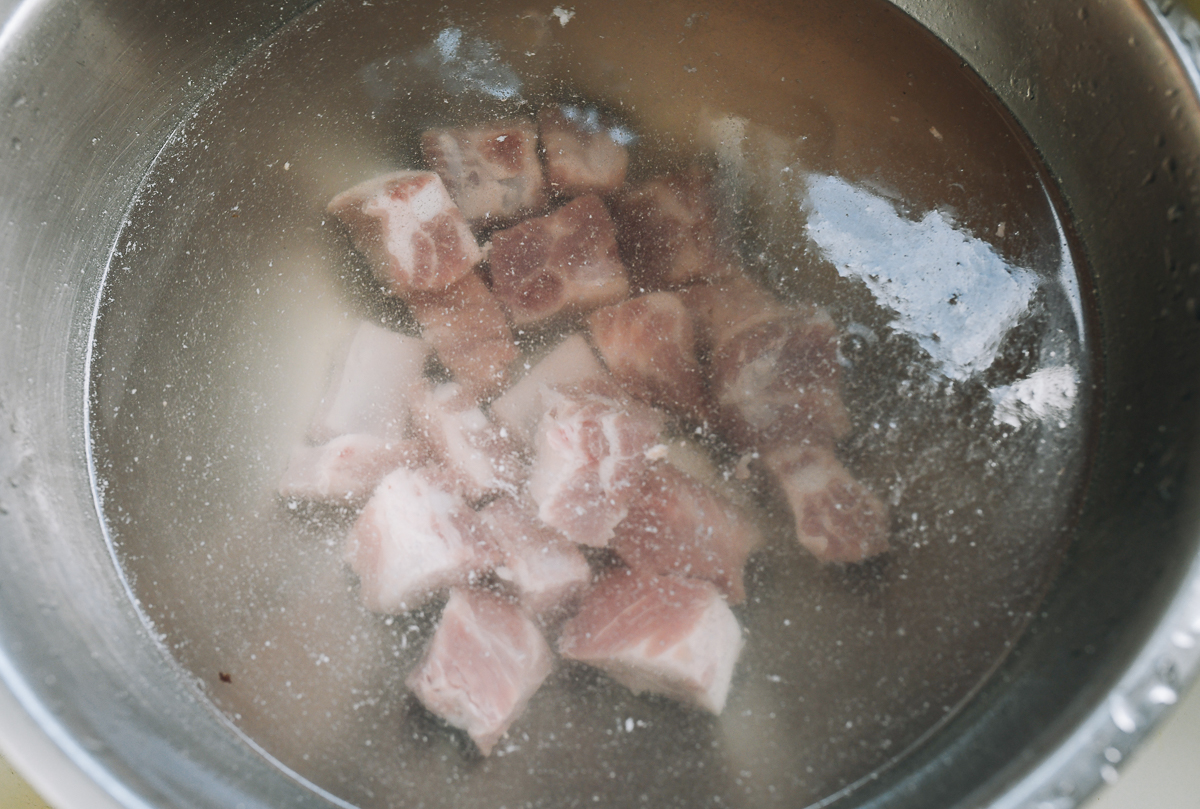
After soaking, rinse and drain the ribs thoroughly.
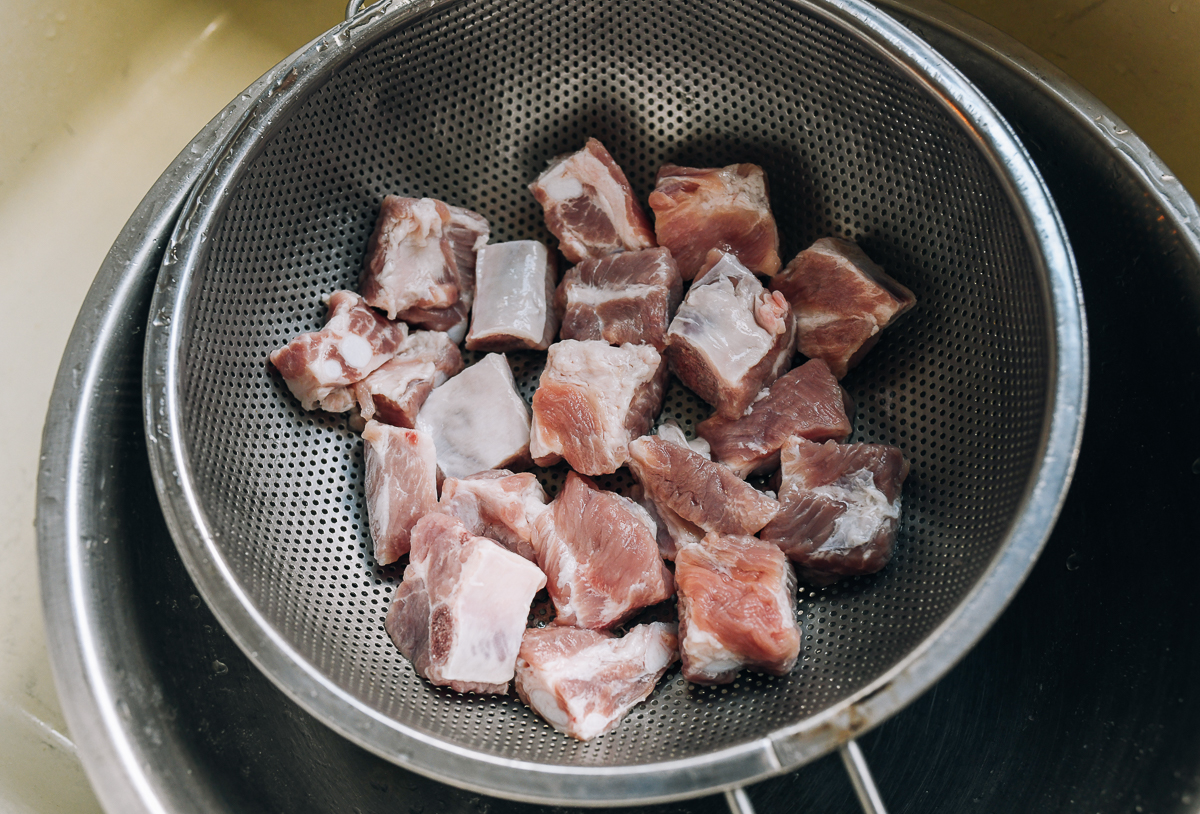
Transfer the ribs to a mixing bowl, adding garlic, ginger, sugar, salt, white pepper, five spice powder, red fermented bean curd, Shaoxing wine, sesame oil, oyster sauce, and dark soy sauce. Mix well to coat the ribs evenly. Cover and marinate in the refrigerator overnight, or for at least 30 minutes.
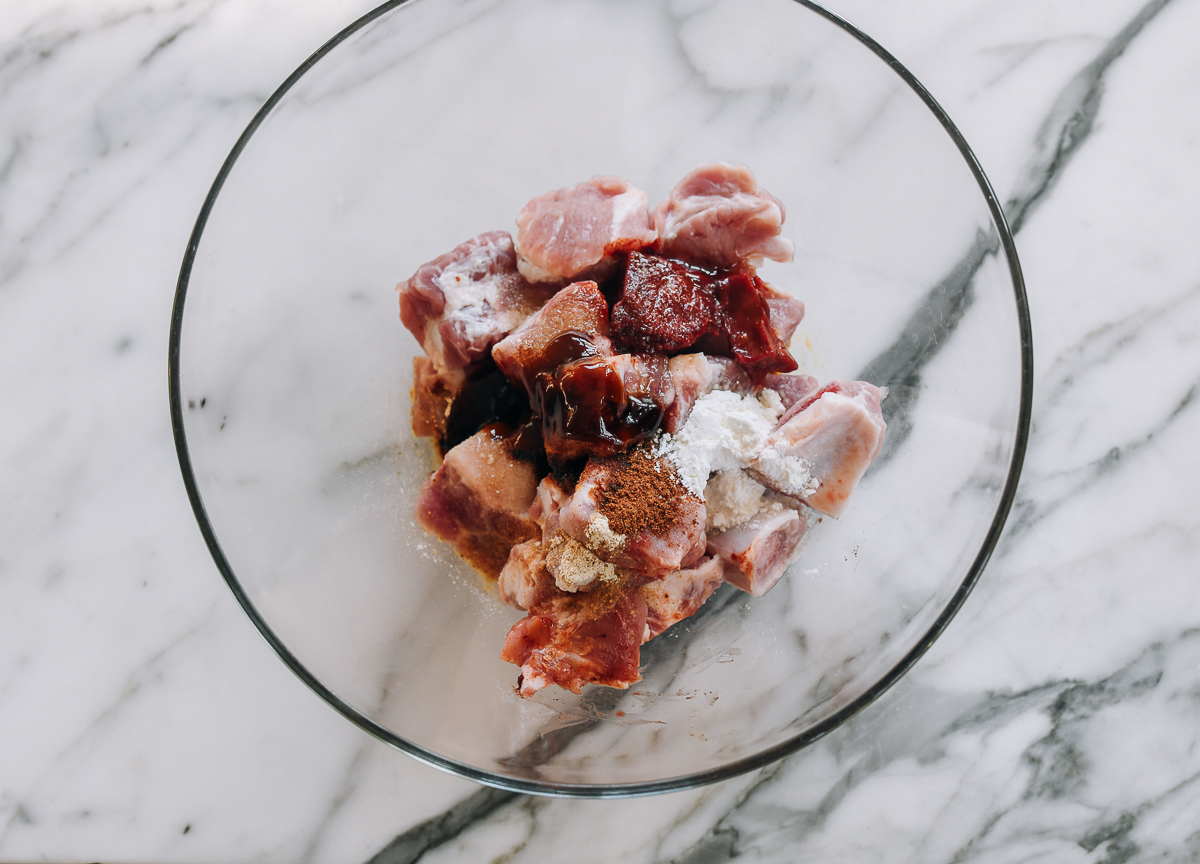
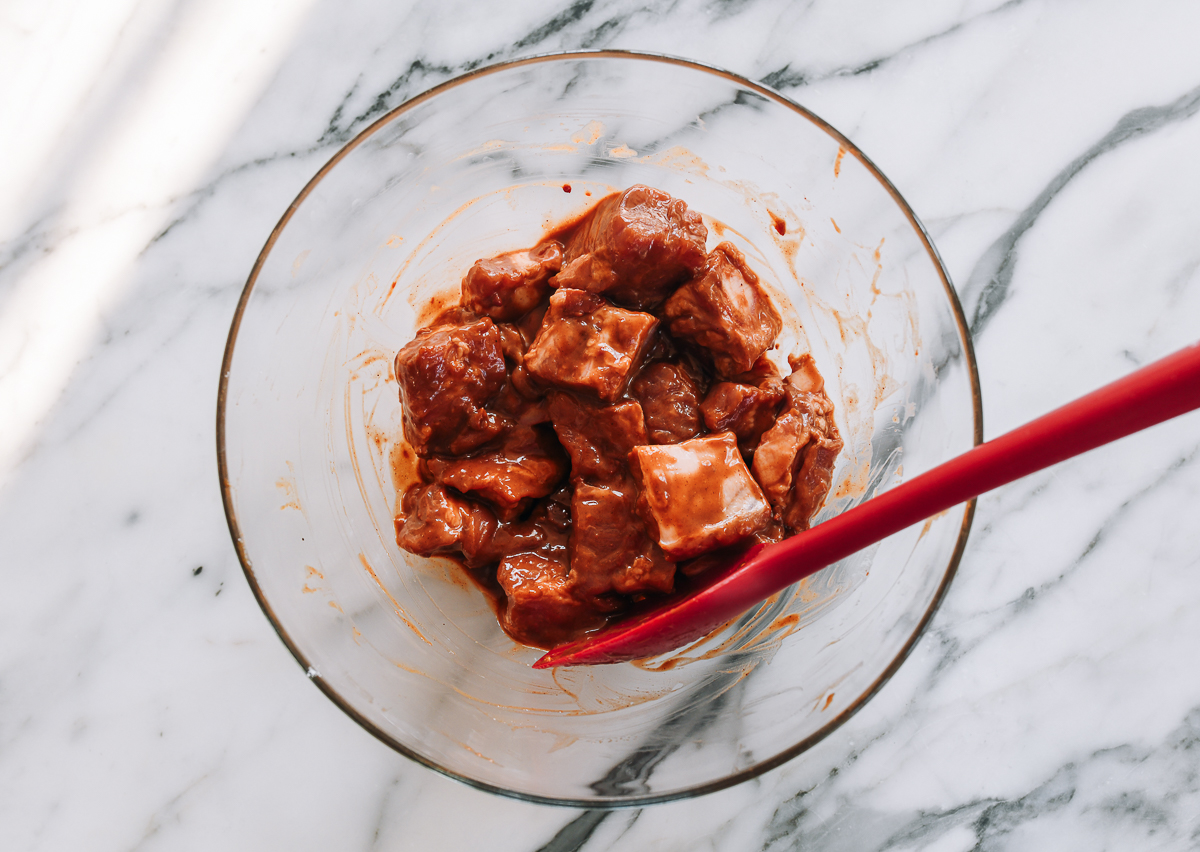
Strapped for time?
For best results, marinate overnight, but if you’re short on time, a minimum of 30 minutes will suffice.
Just before steaming, toss the ribs with cornstarch, ensuring it is evenly incorporated. The marinade should cling to the ribs, with minimal standing liquid.
Spread the ribs evenly in a shallow heatproof dish that fits your steamer. A round ceramic or glass pie plate works well.

Next, bring water to a simmer in a metal steamer or wok with a steaming rack set at the bottom. Place the dish of ribs onto the rack, cover, and steam over medium heat for 15-20 minutes, until the ribs are opaque and cooked through.
The water should maintain a steady simmer to produce sufficient steam for cooking. Cooking time will depend on the size and thickness of your ribs, which will take on a reddish hue from the fermented bean curd.
Garnish the ribs with chopped scallions, if desired, and serve with steamed rice!
